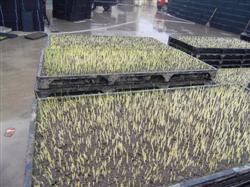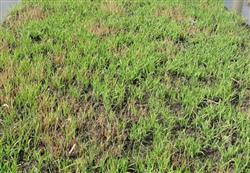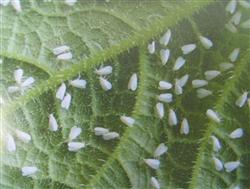How to control rice blight?

What are the hazards of rice blight? How to control rice blight? Also ask experienced netizens to help introduce the harm of rice blight and control methods can refer to the following introduction. The harm of rice blight 1. The harm of blight to rice buds: it occurs before or when it is unearthed, the young buds or roots of seedlings turn brown, the diseased buds twist and rot and die. There is a mildew layer at the base of the seed or bud. 2. the harm of Rhizoctonia solani to rice seedlings: from the needle setting stage to the second leaf stage, the heart leaves of the diseased seedlings were withered and yellow, the leaves did not expand, the base became brown, sometimes there were brown spots on the leaf sheath, and the diseased roots gradually turned yellowish brown. There is a mildew layer at the junction of the seed and the seedling base, the stem base is weak and easy to break, and the seedlings often form clusters, occur and die in pieces in the seedling bed. Control methods of rice blight: first, soil treatment: neutral and alkaline soil, acid treatment should be carried out before sowing, and the pH value should be adjusted below 6, which can effectively control the infection of rice blight. The specific methods are as follows: before sowing, the soil was tested, the pH value was 6mur6.5, the special acid fertilizer was 30-40g per square meter, and the pH value was 6.5mur7. 40-50g was applied on the day before sowing, and fully mixed with the soil, so that the soil pH value was adjusted to between 4.5 and 5.5. Control method 2. Disinfect the seedbed: after acid treatment, the seedbed is diluted to 600 times aqueous solution with 70% dimethazone 2g per square meter, and sprayed evenly on the seedbed. In case of sunny day, the dosage of dimethazone will be reduced by half, otherwise the seeds will be burned. Control method 3. Control of sowing density: mastering the sowing rate is a key link in the cultivation of dry seedlings. Generally, the seedlings are raised for 55 days, and the sowing amount is 20ml 25g per square meter. If the sowing is too dense, the seedlings are thin and long, the resistance is weakened, and they are susceptible to blight, while the strong seedlings are more resistant and are not easy to be infected with blight. Fourth, chemical prevention and control in advance: from 1 leaf to 2 leaves and 1 heart stage, the disease is most likely to infect dead seedlings. Foliar spray can be carried out with 600 times liquid of Dixong or 500 times liquid of Likuling, and spray once every 5 seconds for 7 days, twice in a row, especially Dixong has a special effect on the control of blight. Control method 5. Temperature control of early rice seedlings: from sowing to emergence, the temperature in the film is kept at 30 ℃, the temperature in the film is controlled at 30 ℃, and the temperature in the film is kept at 25 min. Open the film from 10:00 to 04:30 in sunny day, open the film for 2 hours in cloudy day and breathe in rainy day, but the temperature in the film should not be lower than 12 ℃, otherwise it is easy to induce bacterial blight and uncover the film at 3 leaves and 1 heart. Click to get more rice planting techniques click to get more food crop planting techniques
- Prev

How to control rice blight by seedling?
How to control rice blight by seedling? Are there any effective prevention and control methods? Rice bacterial wilt is the number one disease of rice seedlings. Generally, rice bacterial wilt can be divided into two types: one is fungal bacterial wilt, the other is physiological bacterial wilt, also known as bacterial wilt. The following is aimed at the blight.
- Next

Control of rice diseases and insect pests: how to control rice whitefly?
How to control rice whitefly? What are the hazards of rice whitefly? How does rice whitefly happen? Please introduce the harm of rice whitefly: Rice whitefly, also known as rice whitefly, is a new pest on rice. In addition, damage to sugarcane, corn and other food crops, as well as horse tang, paspalum grass, gold and other crops.
Related
- The first cup of black tea in spring, the flavor and history of tea gardens in Kenya, Africa
- The computer can not only choose potatoes, but also grow tea rice. AI will grow winter oolong tea champion.
- It is not only the inflated tea bitten by insects, but also engraved with the four seasons tea in Beipu.
- The Oriental Beauty Tea Festival in Zhuxian County takes the stage at the weekend to experience the plus-size feast of oil tea.
- & quot; Oriental Beauty Tea & Exploration of Emei in Hsinchu, the hometown of quot;
- The new variety of strawberry "Tainong 1" dessert is the first choice with mellow aroma. Crimson gorgeous
- History of Tea in Taiwan: from Wild Inner Mountain to Export Tea Garden
- Two types of Taiwan Oriental Beauty Black Tea won the British three-Star Award for Childhood Tea Xiang Zhang Jiaqi changed from pilot to champion tea maker.
- Banana species and varieties: the planting history of Taiwan Xianren banana and dwarf banana is long, is banana disease resistant?
- Coffee planting Technology: Qianjie Coffee from Seedling to harvesting

